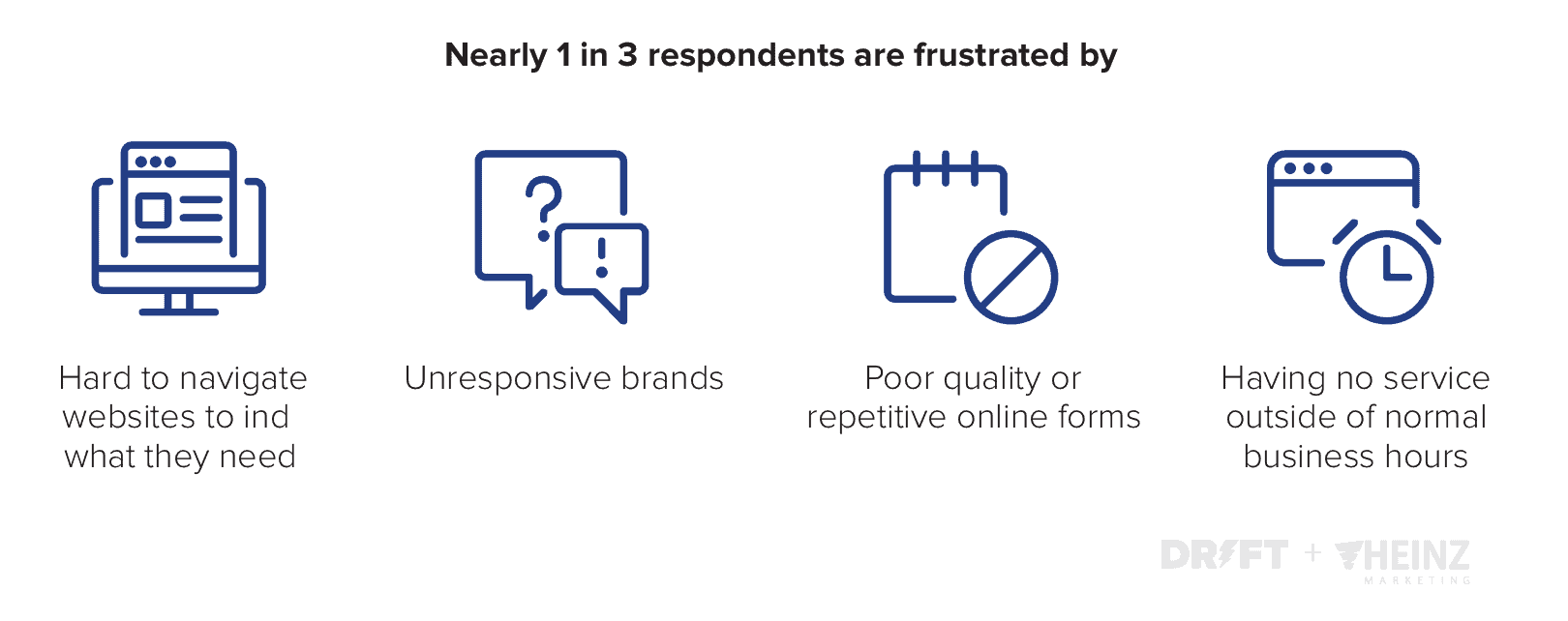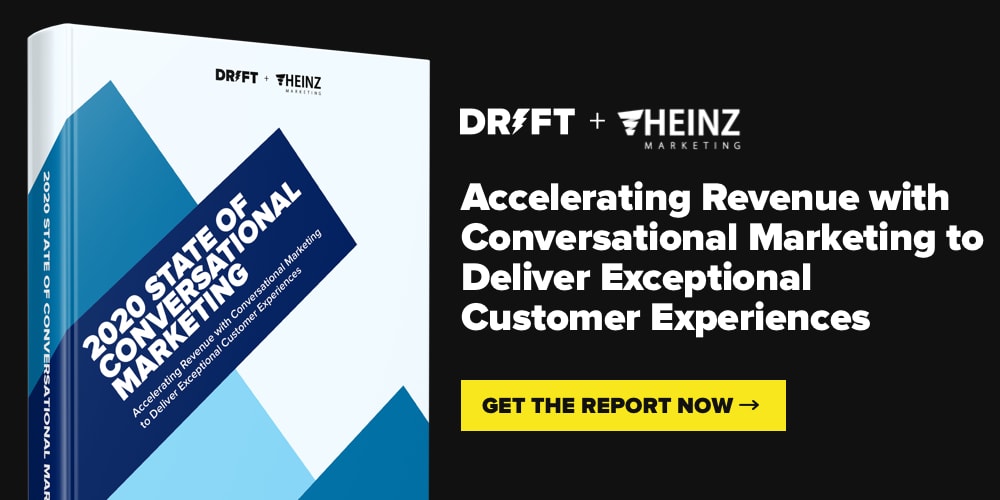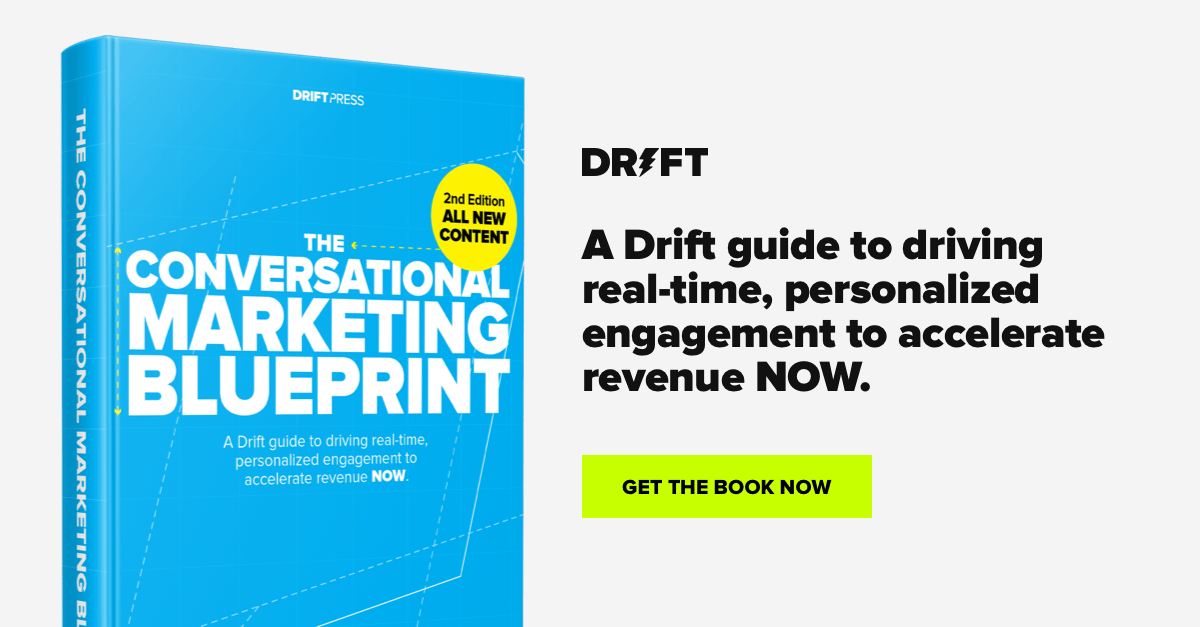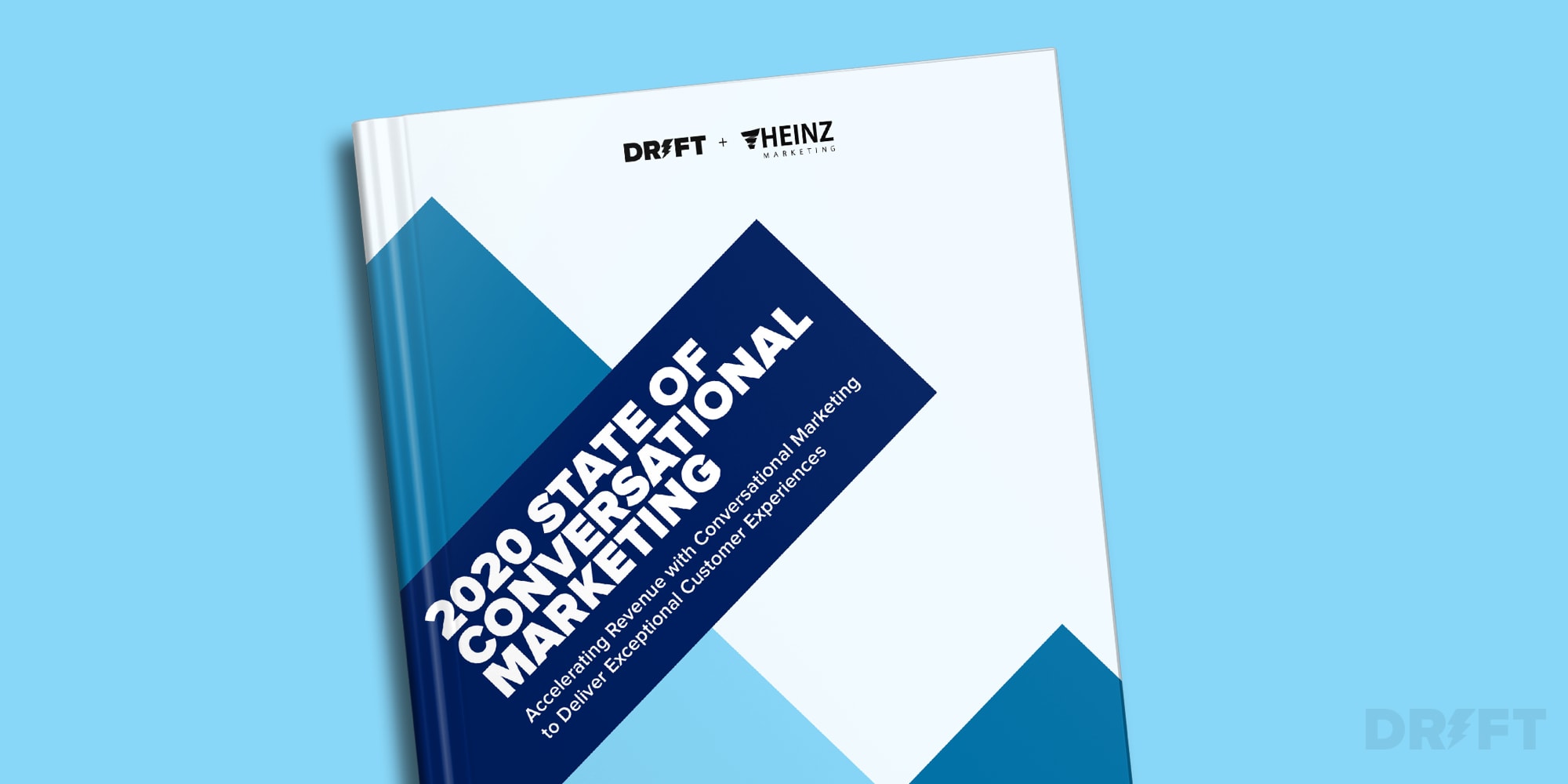
Editor’s Note: The following is an excerpt from the 2020 State of Conversational Marketing report. You can access the full report for free here.
In the wake of the coronavirus pandemic, we are in the middle of a colossal paradigm shift in the way we work, socialize, and engage the world. And now, as many organizations – B2C and B2B, big and small, new and old – transition the way they work to work-from-home, the online experience – for you and for your customers – matters more than it arguably ever has before.
We’re not only transitioning employees to work from home – we’re transitioning entire business processes to work remotely as well. And according to Gartner, the response to COVID-19 has only accelerated both the speed and scale of digital transformation, “escalating digital initiatives into digital imperatives.”
To accelerate revenue today, you must have the right digital infrastructure. Unfortunately, a lack of internal digital skills could jeopardize any plans of winning the digital transformation race. And this misalignment is only made more apparent as traditional online B2B experiences continue to fall short of users’ expectations, wants, and needs.
Traditional Digital B2B Experiences Are Noisy, Chaotic, and Poor for the Customer
Today’s digital B2B marketplace is noisy, chaotic, and highly irrelevant for today’s savvy digital consumers. And filled with intrusive ads, generic and jargon-heavy messages, poorly designed websites, and repetitive gates and hoops, today’s online B2B experiences feel (almost purposefully) designed for anyone but the buyer. And those gaps are only further widened by the polish and gleam of the innovative B2C experiences that have been created and fine-tuned with the rise of Netflix and Amazon.
When respondents to the 2020 State of Conversational Marketing survey were asked to think about the B2B products and services they use every day, as well as the frustrations they typically experience with those solutions, our data further illustrates these problem areas.
- 53% of respondents feel frustrated by receiving too many irrelevant ads and emails from B2B companies
- 36% feel they can’t get answers to simple questions
- 35% say that services feel impersonal
Frustrations Continue to Grow from 2019 to 2020
And frustrations with online experiences have continued to rapidly grow in the past year. In 2019, the three biggest frustrations identified were:
- Being unable to get answers to simple questions (34%)
- Dealing with websites that are difficult to navigate (30%)
- And finding basic details about a business (e.g. address, hours of operation, or phone number) (25%)
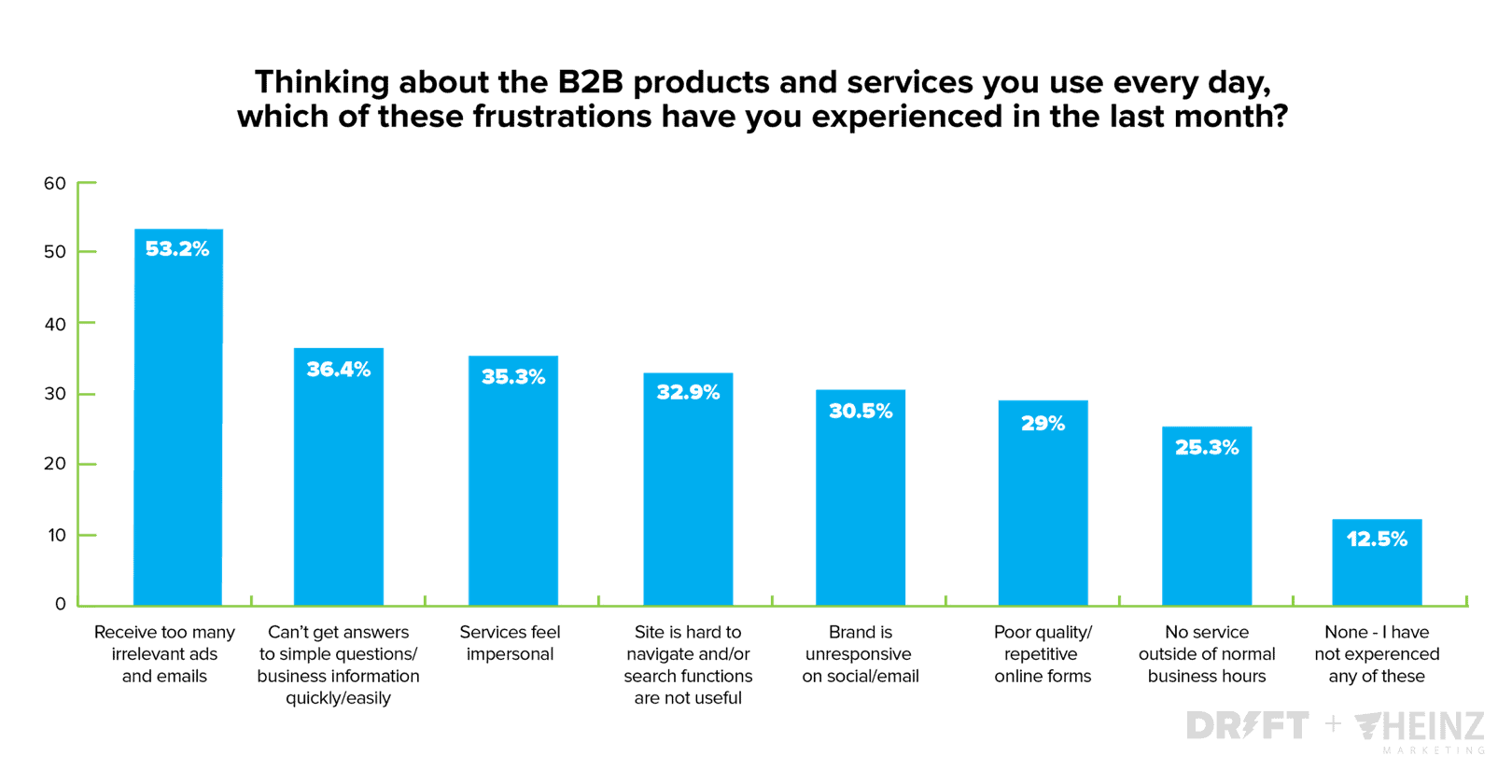
In 2020, our data showed that frustrations around the inability to get answers to simple questions grew by 9% and frustrations around difficult to navigate websites grew by 8%. However, our data also showed massive growth in other areas. In the past year:
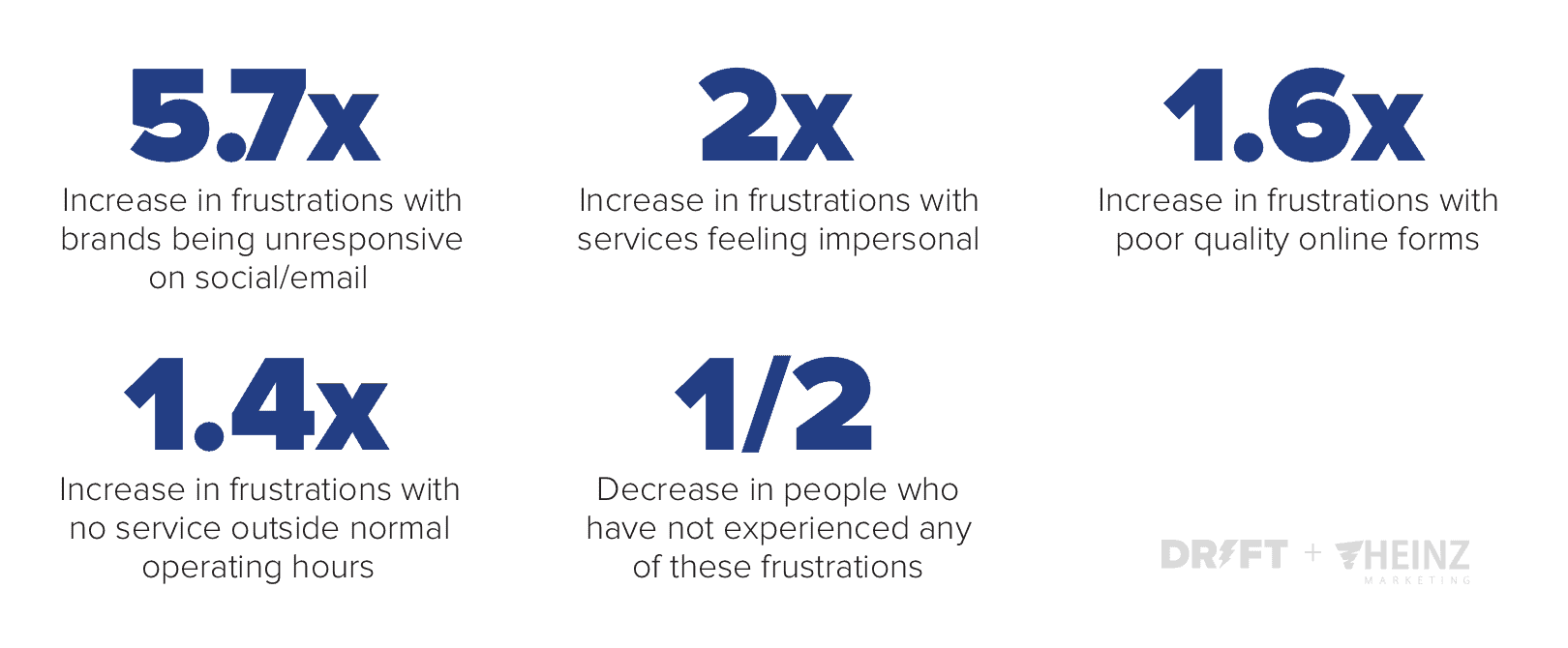
The Future of the Customer Journey and the Customer Experience
Spurred by the response to the coronavirus pandemic, the B2B digital landscape is changing, and it’s changing fast. Simultaneously, the customer experience is transforming as well, impacting how companies not only generate, but accelerate revenue in our new normal.
As companies continue to lean into their contingency plans of remote work, to succeed long-term, they must transform their digital experiences to address the new customer journey.
Now more than ever, buyers are spending more time online, interacting digitally with businesses 24/7/365. And even after the pandemic subsides, 82% of company leaders still plan to allow employees to work remotely some of the time. If they haven’t done so already, this finding only validates the need for organizations to further invest in their digital, customer-first infrastructure, offering frictionless online experiences that truly resonate with their customers.
“Looking to the future, the B2B customer relationship will grow in complexity as customers continue to gain the upper hand and dictate the experience.”
– Walker
While B2B buyers are spending more of their time researching independently, less of their time actually meeting with potential suppliers (only 17% of their time, according to Gartner), and now have greater access to information than ever before, they are also incredibly overwhelmed with the sheer amount of information they have to sift through and prioritize.
“With more information, options, and people involved in a buying process, buyers are paralyzed when trying to move forward.” And now, more than ever, “sales [and marketing] teams must affirm customers’ confidence in their decisions to drive account growth.”
In the age of remote work, rapid digital transformation and information overload; business success and revenue acceleration rely not only on your understanding of the new customer journey, but on your ability to take action within it. Success today requires you to intimately know your customer, foster meaningful interactions, spark personable conversations, and deliver authentic, innovative experiences that build customer decision confidence in this increasingly complex web of the customer journey.
The imperative now falls on the shoulders of B2B organizations to unburden their buyers and affirm their decisions. It places the onus on B2B sellers and marketers to offer relevant, meaningful content when the buyer needs it – on their terms, through their channels – rather than when or how the company deems it appropriate. It’s about enhancing and empowering the journey of a customer through adaptive, intelligent, and personalized experiences.
And in 2020 and beyond, it’s these highly sophisticated customer experiences, created with the help of Conversational Marketing, that will truly separate the leaders from the laggards.
For more trends and findings, you can get your FREE copy of the 2020 State of Conversational Marketing report here.
You can view the 2019 State of Conversational Marketing report here.





